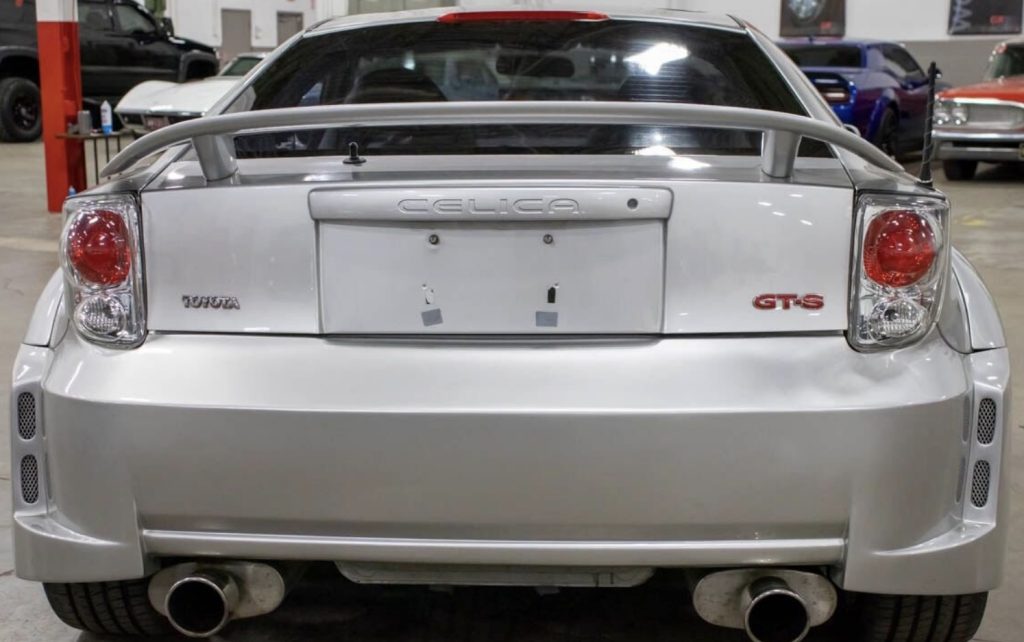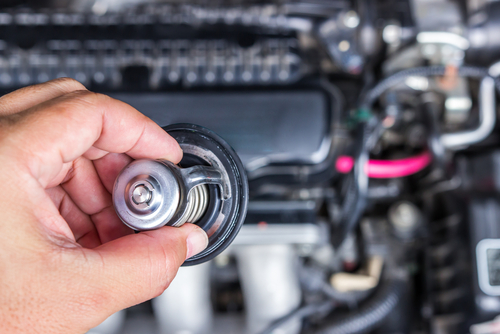
The P0128 OBD II trouble code indicates that your Toyota Celica’s engine coolant temperature has not reached its required operating temperature within a certain amount of time after starting the car. This code can appear as soon as you start your vehicle, or it can also occur while driving.
It’s essential to address this issue immediately, as vehicles with this issue have increased emissions and decreased fuel efficiency. In this article, we’ll explore the possible causes of the Toyota Celica P0128 OBD II trouble code and some possible solutions.
P0128 is most often caused by a thermostat that is stuck open.
P0128 Quick Info

| Definition | P0128: Coolant Temperature – Below Thermostat Regulating Temp |
| Symptoms | Lack of heat, MIL (check engine light), MPG Loss (1 or 2 tops) |
| Common Causes | Thermostat stuck open, Engine Coolant Temp Sensor (ECT) issues |
| Breakdown Risk? | No |
| Repair Cost (Parts) | Less than $100 |
| Repair Difficulty | Moderate |
P0128 Definition: Coolant Temp – Below Thermostat Regulating Temp
The P0128 OBD-II trouble code is a generic powertrain diagnostic code (it has the same meaning for the Toyota Celica as any other vehicle).
Coolant Temperature
The coolant temp sensor is responsible for telling the Engine Control Module (ECM) the engine’s coolant temperature.
P0128 indicates an issue with the engine’s coolant temperature not reaching the proper operating temperature within a certain amount of time.
Below Thermostat Regulating Temp
As part of your Celica’s computer system, your Engine Control Module (ECM) tracks various engine conditions, such as air temperature, engine speed and load, coolant temperature, etc.
When the ECM detects that the engine’s coolant is not reaching its proper operating temperature within a set timeframe, it will trigger this P0128 trouble code to alert the driver of a potential issue.
Celica P0128 Symptoms

The most common symptom of a P0128 trouble code in a Toyota Celica is an illuminated malfunction indicator lamp (MIL). Other symptoms may include poor engine performance and a decrease in fuel economy.
- Lack of heat– The most prominent symptom of the P0128 trouble code in the Toyota Celica is the lack of heat. When the thermostat doesn’t bring the engine up to the proper operating temp, it means that the coolant going through the heater core isn’t as hot. This leads to less/no heat. If you feel your car’s heater working better when sitting still and worse on the highway, that’s a dead giveaway for a thermostat that is stuck open.
- Service Engine Soon– Other than the heater not working, the only other symptom of P0128 is typically the service engine soon light itself.
- Slight Decrease in fuel economy– The P0128 code may also lead to a slight decrease in fuel economy. This is because your Celica’s engine is running at a cooler temperature than it should be. As a result, it consumes more gasoline to keep itself running correctly.
P0128 Causes: Toyota Celica
Fixing P0128 in the Toyota Celica is usually a pretty easy thing to do since, 90% of the time, a stuck thermostat will cause the problem. Here are the most common causes of P0128:

- Thermostat Stuck Open– Far and away, the most typical cause for the P0128 code is a thermostat that is stuck open. When a thermostat is stuck open, it allows coolant to flow through the engine at all times. When this happens, the engine is “over-cooled” and never reaches the proper operating temperature. How to Replace a Thermostat (video).
- ECT Sensor/Wiring- If the thermostat itself isn’t the problem, it’ll be the wiring/sensor associated with Engine Coolant Temperature Sensor (ECT).
Toyota Celica P0128 Diagnosis
An excellent way to tell if it’s a sensor issue or an issue with the thermostat is whether or not the Toyota Celica’s engine is running at its proper operating temperature.
It can be challenging to tell this in a vehicle that doesn’t have a temperature gauge. If you feel the heater isn’t working well, that is the easiest way to tell the thermostat is stuck open.
Are there Other Codes?
If there are codes related to the ECT, such as P0117 or P0118, they indicate that the Engine Coolant Temp Sensor is not performing correctly, which means you should start diagnosing P0128 in your Toyota Celica by taking a look at the ECT and wiring.
Is the Heat Blowing Hot?
An excellent way to at least get a good idea of whether it’s the thermostat or the sensor is to start the car cold and let it idle for ten minutes. If you feel little to no heat from the heater, it’s a good indication that the thermostat is the problem and not a wiring issue.
Squeeze the Thermostat Hose
A mechanic will check under the hood where your Celica’s radiator hose meets the thermostat housing. If it is easy to pinch the hose, the engine coolant will typically flow through it.
If you pinch your hose, stay aware of the belted accessories and the fan. The fan can come on at any time.
Check the Coolant Temperature
As a further step, the mechanic may check the coolant temperature at the thermostat housing to see if it’s responding correctly. If it isn’t, there’s likely an issue with the thermostat itself.
You’ll need an infrared temperature gun to verify the temperature at the thermostat. They’re not very expensive at places such as Harbor Freight.
Inspect All Electrical Connections
The mechanic will also inspect all electrical connections to ensure they are in good condition and not corroded or loose. If they are, repair the harness and verify that it clears the code.
Replace the Thermostat
If all of the above checks out and it still seems like the thermostat is the culprit, then it’s time to replace it. Replacing the thermostat in the Toyota Celica is relatively easy and should take no more than an hour or two.
After repairing your Celica, clear the code from your car’s computer and reset it. Then, take a test drive and verify that it hasn’t returned.
Conclusion
P0128 is not a severe threat to the immediate drivability of your Celica. However, it should be noted that most modern fuel-injected engines like to run at 200+ degrees. Letting them run too cool can cause problems after an extended period. Good luck figuring out what is going on with your Celica!
